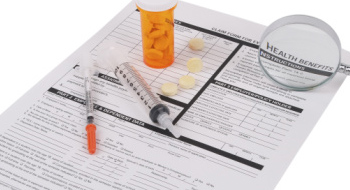
Most people I know are reasonably smart consumers.
They brag about how much they saved on the latest Groupon; they stand in line in the cold on Boxing Day to get a deal on a 3D TV; and they wouldn’t dream of walking into an auto showroom and paying the full sticker price for a new car.
Many of these same people wouldn’t have the first clue that the cost of their maintenance medication may be 15% cheaper at another pharmacy, or what a dispensing fee at their current pharmacy is.
They may also wonder why their group insurer covered only 68% of their last spa massage, despite the fact their plan supposedly has full coverage up to $500 annually, or why only 76% of their latest dentist visit was reimbursed when they have 90% coverage.
As Canadians, we often don’t pay much attention to the costs of health and dental services unless we have low benefits coverage or no coverage at all. A lot of employees blindly pay their co-insurance, deductibles and co-pays without ever questioning if there are ways to save money on these health and dental services and supplies.
Here are a few more significant disconnects where it would pay for employees to have increased awareness levels.
Drug Costs
Adherence – Approximately 30% of emergency room visits are due to non-compliance of medication. The simple act of taking medication as prescribed can have a big impact on an employee’s health costs.
Generic drugs – Depending on the province, the generic can cost as little as 25% of the interchangeable brand drug. Several insurers have recently implemented stricter rules for generic usage, now requiring medical evidence to be covered for a multi-source brand drug.
Ingredient costs – Drug costs can differ significantly from pharmacy to pharmacy. If employees need an antibiotic for a sinus infection, they’re probably not going to shop around, but if they are on maintenance medications, there may be substantial savings waiting at another pharmacy.
Dispensing fees – These fees can differ by as much as $7 or more per prescription depending where your employees shop. If multiple family members are each taking a handful of maintenance drugs, switching pharmacies could provide meaningful savings.
Dental
In the Wild West, an Alberta dental fee guide has not been published since 1997. Dentists charge what the market will bear, which is often well in excess of insurers’ reasonable and customary (R&C) guidelines. A dentist renting prime real estate in a shiny downtown oil tower is generally going to charge much more than one outside the city core or in rural Alberta. This often leaves employees wondering why their 100% plan is reimbursing less than 100% of their dental treatments.
In all other provinces and territories, dental fee guides are reviewed and published annually to provide dentists with a guideline for establishing their own independent fees. However, most dentists charge fees that are relatively close to the published fee guides.
The discrepancy between insurers’ R&C guidelines and what dentists actually charge is not as prevalent an issue in the rest of Canada as it is in Alberta.
What can differ significantly from one dentist to another in any province is the recommended treatment.
If a dentist is recommending a costly procedure, employees would be wise to get a second opinion in order to determine if the recommended service is necessary or if a lower-cost alternative treatment would provide a comparable dental outcome.
Massage Therapy
If employees get a massage at a spa with the slippers and robes and calming green tea, they need to know their insurer is likely not going to reimburse the full expense. These types of treatments can cost upwards of $150 for an hour massage, but the R&C guidelines are only going to allow about $80 to $90 as an eligible plan expense—and only if it’s done by a registered massage therapist.
In order to fully engage employees to take action, plan sponsors should consider education in conjunction with plan design elements that provide financial incentives for being smarter consumers.
